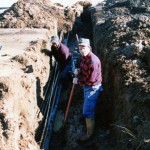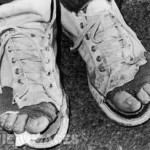My Top 2 Tactics To Improve GCS/Clubhouse Relations
As a survivor of several particularly vicious maintenance vs clubhouse feuds, I want to stress one thing: Nobody ever wins a fight.
Thats why the GCS should strive to create a productive working relationship with the clubhouse, except for F&B; they usually only respond to swift and forceful punishment.
Although I never used one, the GCS Blog has become my favorite tactic for insuring a strong relationship between clubhouse and maintenance operations. Chris Tritabaugh of Northland CC is a master of blog technique; check out northlandgrounds.blogspot.com for a brilliant lesson on how its done. Paul Carter of Bear Trace at Harrison Bay, TurfNets Superintendent of the Year, also has an excellent blog (bthbgcm.blogspot.com) that fosters a harmonious environment between course departments and membership.
The GCS Blog explains what is happening on the courseand whyin a timely manner, while also forging a personal point of contact between the superintendent and members.
 The Blog is so much better than the method I used for decades, that of dressing like a crew worker and pretending not to know the whereabouts of the GCS .
The Blog is so much better than the method I used for decades, that of dressing like a crew worker and pretending not to know the whereabouts of the GCS .
Rather than learn what the GCS is planning through the contact point of oldthe pro shop countermembers can check the maintenance calendar prior to planning their rounds and avoid the emotional upset of arriving at the course and seeing 10 cores covering the greens. When a member is upset, the wrong word from the pro shop counter, whether intentional or not, can create a situation with the potential to escalate beyond reasonable parameters . . . like when you bought that new hunting bow and the kids told Momma how much you spent while showing her the holes in their shoes.
 There are many other methods for improving inter-club relations, things like training the crew to smile, wave and be polite, even to the F&B manager. You can remove crew members clearly in need of heavy sedation, do things like writing down member suggestions, act quickly on easy fixes and cater to the most powerful group in the club hierarchy, the Womens Association.
There are many other methods for improving inter-club relations, things like training the crew to smile, wave and be polite, even to the F&B manager. You can remove crew members clearly in need of heavy sedation, do things like writing down member suggestions, act quickly on easy fixes and cater to the most powerful group in the club hierarchy, the Womens Association.
If I wasnt involved in major construction, I set up a relaxed 9-hole walking match on Tuesdays, typically about an hour before the crew left for the day and invited the pro . . . sort of a staff meeting on site.
It was always match play, so I might win a hole, the bet was capped at loser buys the iced tea and I made it clear that I was still working. It was positioned as a course survey from the golfers POV, so I did not warn off the technicians or assistant . . . I kept up a continuous dialogue with them during the round, handling routine decisions and pointing out things I noticed while playing.
If the pro had a suggestion or a question regarding something he didnt understand, I moved on it as we walked along. We became teammates, us against them, rather than department opponents wrestling for the same budget dollar. Every Tuesday, we flipped nines, in order to see everything.
Eventually, others sought to join the match and it was common to win an iced tea off the Green Chair or a board member. It helps if they see you as one of them, an obsessed golfer, afflicted with the sickness and making no attempt to recover. While it is important to cultivate the image of golf course management scientist/engineer/hydrologist/arborist/master gardener and so on, it is vital that the people in club leadership positions see that you understand the game.
Of course, if you are thrown into that unfortunate position where the club leadership is irrational, confrontational and a threat to the course and your career, you might get drawn into a feud no matter what positive steps you take. At that point, try this:



0 Comments
Recommended Comments
There are no comments to display.